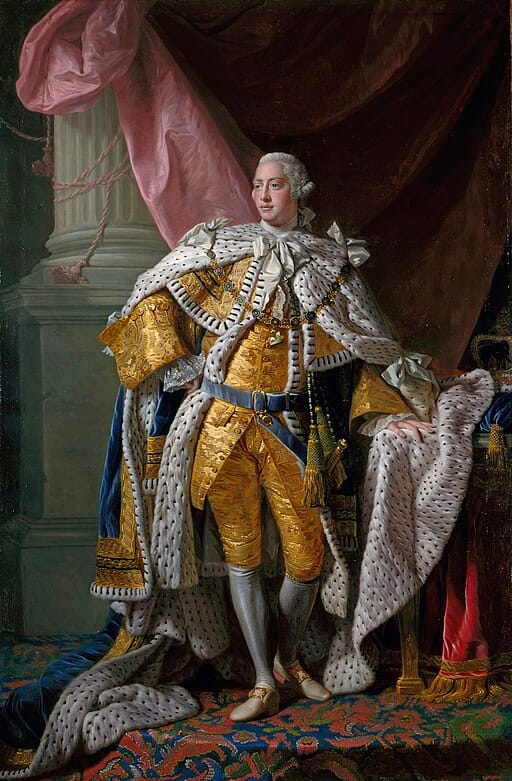What is the U.S Constitution?
What if one document could define a nation’s identity and protect its freedoms for over two centuries? That’s exactly what the U.S. Constitution has done.
1787 US constitution copy and ratified in 1788 and full effect by 1789. The U.S. Constitution remains the longest surviving written charter of government in the world but still it’s more than ink on parchment. It’s a bold declaration of principles that continues to guide American life, from the power of presidential elections to the everyday freedom of speech this living document touches every citizen.
So what does dumping tea in Boston Harbor have to do with it?
That defiant act in 1773 was about more than tea. It was about self-rule. Colonists were fed up with taxation without representation and they wanted a voice, freedom and a system that protected their rights and The Constitution became the answer. It gave structure to a new nation born from protest and hope.
Today the U.S. Constitution stands not just as a historic artifact but as a symbol of what Americans fought for: liberty, justice and the power of the people.

Public domain image. Originally published before January 1, 1930. Source: Wikimedia Commons.
Why was the U.S Constitution Created?
Before the ink dried on the U.S. Constitution America was a nation on the brink. Under the weak Articles of Confederation there was no executive leader, no power to collect taxes and no way to enforce national laws. States acted like rival countries and the young republic stood dangerously divided.
That’s why in May 1787, 55 delegates from 12 states gathered in Philadelphia for what would become the Constitutional Convention. What was their mission? To save the country.
This bold move echoed the spirit of the Boston Tea Party. When American colonists, fed up with British rule and dumped tea into Boston Harbor. It was not just about tea but it was about demanding a voice, self-governance and a system that respected individual freedoms.
The U.S. Constitution was the answer to that cry. With the iconic words:
“We the People of the United States, to form a more perfect Union…” — Preamble to the U.S. Constitution
Crafted in crisis the Constitution gave the nation the power to govern, protect liberty and unite the states under one enduring framework. It stands not just as law but as a bold act of defiance fulfilled. A dream born in protest, written in Philadelphia and lived ever since.
When the U.S Constitution was Written
On September 17, 1787 after months of heated debates 39 delegates signed the U.S. Constitution. A daring act of unity that would forever reshape history but what sparked this bold move? Just like the Boston Tea Party where American colonists dumped tea into Boston Harbor to protest tyranny and demand representation. The Constitution was born from a desire to build something better.
At the heart of the Constitutional Convention were deep divides: large states backed the Virginia Plan, favoring representation based on population. Small states fought back with the New Jersey Plan and wanted an equal say. The stakes? Total collapse or lasting unity.
Through fierce negotiation the Great Compromise emerged, birthing a two-chamber Congress: the House of Representatives (population-based) and the Senate (equal for all states) and this blend of ideals allowed federal power and state sovereignty to coexist.
The U.S. Constitution was not just ink on parchment but it was a bold answer to chaos, crafted to ensure liberty, justice and a government by the people. Just as the tea tossed into Boston Harbor signaled a cry for freedom. This four-page document became the blueprint to protect it.
The most Contentious Debates in the U.S Constitution
- The Virginia Plan vs. the New Jersey Plan
- Small states vs. large states
- Federal power vs. state sovereignty
The U.S Constitution Ratified
What led the American colonists from dumping tea into Boston Harbor to drafting the most enduring framework of government in the modern world? The U.S. Constitution was born from rebellion, fear and hope. After resisting British tyranny the Founders faced a new challenge: how to govern a free people.
By 1787 the Articles of Confederation had proven too weak and the Constitution was crafted to strengthen the nation. Yet not everyone agreed. Anti-Federalists worried it gave too much power to a central government.
To win hearts and minds the Federalist Papers were written by Alexander Hamilton, James Madison and John Jay. Defend the new system and their words helped turn the tide.
On June 21, 1788 New Hampshire became the ninth state to ratify. Make the Constitution official. It went into effect on March 4, 1789 and soon after George Washington became the first President under this bold new document.
The U.S. Constitution was not just law but it was a promise. A promise that power would rest with the people and like the Boston Tea Party. It was fueled by the desire for liberty and self-rule.
- Ratified: June 21, 1788 (when New Hampshire became the 9th state)
- Effective: March 4, 1789
The U.S Constitution and Bill of Rights
The U.S. Constitution is more than ink on parchment and it’s a bold declaration of freedom born from defiance. Just like the Boston Tea Party where colonists dumped British tea into Boston Harbor to protest taxation without representation. The Constitution reflects the same spirit: a demand for liberty, fairness and self-rule.
After breaking free from British rule the Founders knew they needed more than rebellion. They needed a system. Ratified in 1788 the Constitution became the supreme law of the land and was designed not to freeze time but to adapt with it.
Just two years later in 1791 the Bill of Rights was added. Ten powerful amendments guaranteeing core freedoms:
- Freedom of speech and religion
- The right to bear arms
- Protection from unreasonable searches and seizures
But the evolution did not stop there and the Constitution has been amended 27 times. Reshaped America with each change:
- The 13th Amendment ended slavery
- The 19th Amendment gave women the right to vote
- The 26th Amendment lowered the voting age to 18
Each amendment is a reminder: the Constitution lives. It responds to the people’s call for justice just as the Boston Tea Party responded to unjust rule.
So what did the colonists want by tossing tea into the harbor? A voice. A future. The Constitution gave them and all of us that and more.
7 Principles of the U.S Constitution
When American colonists dumped tea into Boston Harbor in 1773 it was not just about taxes but it was about control. Tired of being ruled by a distant king with no voice of their own. They craved something bigger: self-government. This bold act of defiance set the stage for the creation of one of the most powerful documents in history- The U.S. Constitution.
So what did the Founders create after independence? A structure designed to avoid tyranny and protect liberty. The Constitution is made up of seven articles and each one is carefully crafted to keep power balanced:
- Legislative Branch – Creates Congress to make laws
- Executive Branch – Defines the powers and limits of the President
- Judicial Branch – Establishes a federal court system to interpret laws
- States’ Rights – Manages how states interact with each other and the federal government
- Amendment Process – Allows the Constitution to evolve with the times
- Supremacy Clause – Declares it the highest law of the land
- Ratification – Explains how the document came to life
Just like the Boston Tea Party was about reclaiming power the Constitution is about distributing it. It’s a living framework that turns revolutionary ideas into lasting governance.
Why does it still matter? Because every debate, every law and every right we hold today traces back to this document.
Why is the U.S Constitution Important?
Why does the U.S. Constitution still matter over 230 years later? Because it’s not just a legal document but it’s the heartbeat of American democracy.
Much like the Boston Tea Party was a bold act of defiance against tyranny, the Constitution was born from the same spirit. Colonists dumped tea into Boston Harbor not just to protest taxes but to demand a government that represented their voices. That spirit of resistance led to revolution and ultimately to a system where power would rest with the people.
Today the Constitution continues to evolve with American society. It’s cited in courtrooms, debated in classrooms and admired globally as a model of democratic governance. Its relevance lives on. Guiding civil rights, shaping laws and reminding us of our shared ideals.
Thanks to digital access you can now explore the U.S. Constitution for free through resources like the National Constitution Center Museum. Dive into primary documents and discover the historic debates that shaped a nation.
So whether you’re curious about liberty, law, or legacy the Constitution is where it all comes together.
Facts of the U.S Constitution
- When the U.S Constitution was Written: 1787 in Philadelphia
- The U.S Constitution signed: September 17, 1787
- When the U.S Constitution ratified: 1788
- The U.S Constitution date: March 4, 1789
- How many U.S Constitution amendments amended: 27 times
- Foundation of the U.S Constitution: 7 Articles + Bill of Rights
- Legacy of the U.S Constitution: Oldest living constitution still in use
The U.S Constitution Summary
The U.S. Constitution is more than a relic of the past. It’s a blueprint for the future. It balances power, protects rights and adapts with time. Understanding its origins and contents is key to understanding how America works.

